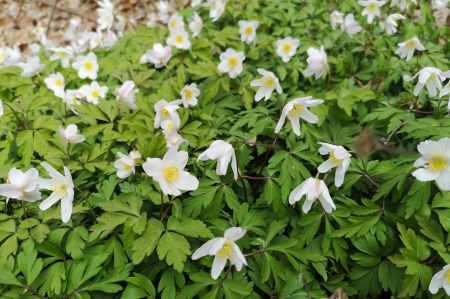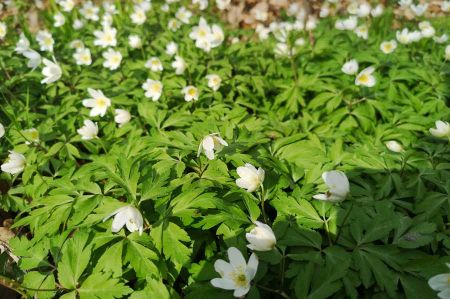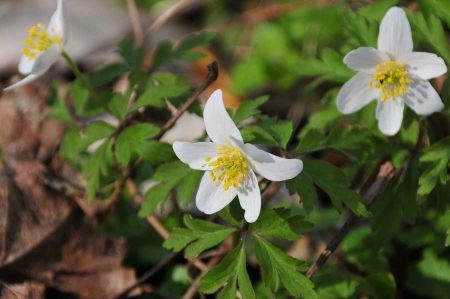Wood anemone - white flowers in the green carpet
- Written by Portal Editor
In times when, due to the reduction of movement and meeting with others because of the risk of infection, when even while travelling the maximum number of people is two and you should avoid meeting with other people as completely as possible, it is getting difficult for many to even leave the house.
Those who have the forest next to their doorstep and who can be that much close to nature, even if it is only for a short walk, can count themselves as really lucky. It is difficult for us too, to forego the obligatory family visits, camping and meeting friends, especially at Easter. But, we were able to use the wonderful weather before Easter several times to explore the surrounding area on foot.

Regionally different names - the wood anemone

The wood anemone is a typical spring flowering plant that forms the herb layer in the woods while the trees are not yet bearing any leaves. Since the wood anemone has high light requirements, the entire life cycle of the plant takes place in spring. Large areas of this socially growing species are often taken up and covered with a carpet of white flowers. Moderately fresh to moist, nutrient-rich, deep, loamy gauze soils are settled in deciduous forests such as beech mixed forests, oak-hornbeam forests and hardwood riparian forests. The wood anemone is considered moderately demanding from an ecological point of view.
In the garden, the wood anemone thrives best in undisturbed places below trees. An occasional addition of humus is sufficient as care. Every tillage measure disturbs the development of the plant.
But be careful - the wood anemone is poisonous!
The survival buds of the wood anemone are located on its sprout at a depth of more than one centimetre below the earth's surface. The leaves shoot out in early spring. After scattering the seeds, the aerial parts of the plants move in in the course of early summer. The nutrients for the next growing season are stored in the soil sprout.
All parts of the wood anemones are poisonous. The main active ingredient is proto anamonine, which is converted into an ineffective anemonin when it is dried. Little research has been done on other, partly unknown, toxins.
Please read as well:
Cornflowers - some color in the dreary gray days in December
Not just beautiful to look at - pomegranates in the garden
